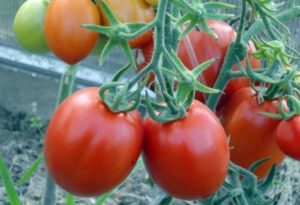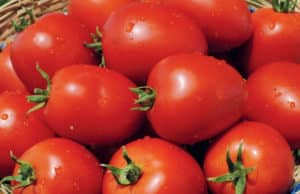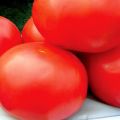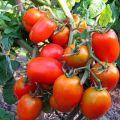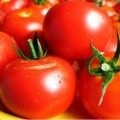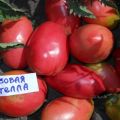Characteristics and description of the Klusha tomato variety, its yield
Currently, breeders have bred a huge number of varieties, so sometimes it is quite difficult to navigate in this variety. For example, Tomato Klusha has already fallen in love with many gardeners and gardeners.
general information
Klusha tomatoes (pink varieties are called Super Klusha) were created in 2006 by a Russian breeder from Siberia V. Dederko. The variety is listed in the official Variety Register. Perfect for growing not only in the southern, but also in the northern regions of Russia. In addition, the Klusha variety has a huge number of positive characteristics.
Such an unusual name for an agricultural crop was given for a reason. In fact, if you look closely, you can see some similarities between the plant and the brooding hen. A small, compact bush that is covered with small tomatoes.
A variety with an early maturity of fruits: from the moment of emergence to the appearance of the first reddened tomatoes, no more than 80-95 days pass. Klusha is a determinant variety, it can grow up to 55 - 60 cm in height. This type of nightshade crop is perfect for owners of small backyards.
A large number of bushes can be planted in a small area, and this will not negatively affect the harvest.
Due to the compactness of the bush, the Klusha tomato variety can be grown even on the balcony. The same characteristics are in the Superklush tomato variety, the only thing that distinguishes them is the color of ripe fruits. The bush is completely covered with small leaves, behind which the tomatoes are practically invisible. The tops are dark green, like most varieties.
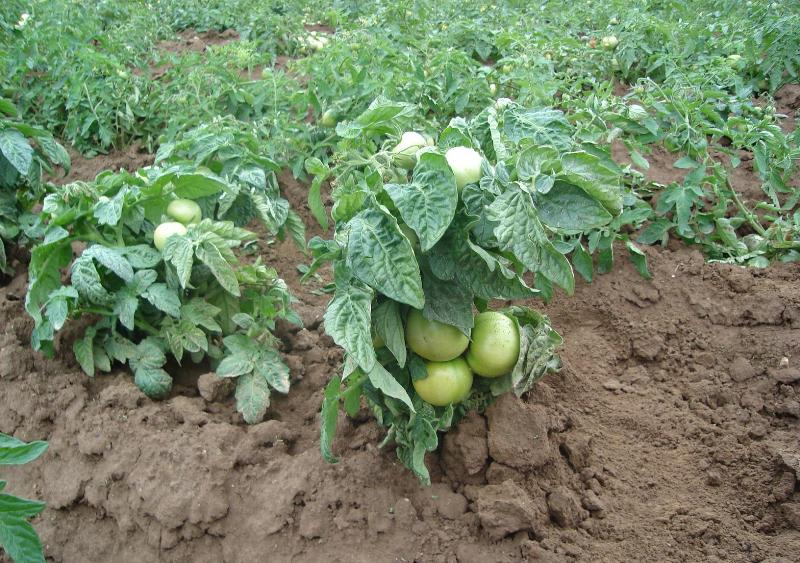
Separately, it should be said about yield of tomato Cluche. Despite the fact that the bushes are very low, they are so covered with fruits that from one plant you can collect from 1.9 to 2.5 kg of tomatoes. This is one of the main advantages of the variety, thanks to which the tomato is so fond of domestic farmers.
Ripe tomatoes have good taste. Especially suitable for preservation as a whole. When preparing sauces or tomato juice, it is better to give preference to large-fruited varieties.
Features of tomato
To decide on a variety of tomatoes for planting in a summer cottage, you first need to carefully study its characteristics.
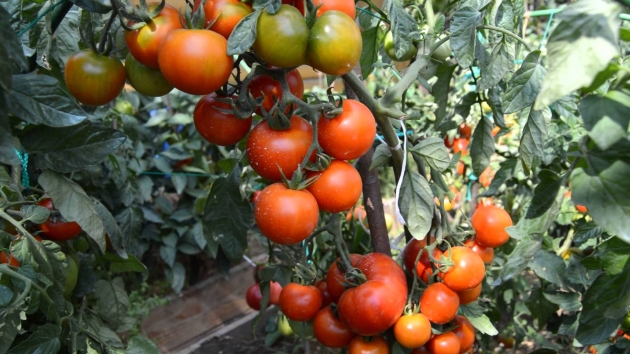
Characteristic features and description of the variety:
- super-yield;
- suitable for growing in small gardens and in all climatic zones;
- a variety with an early ripening period;
- the variety is undersized, no more than 60 cm;
- the stem is thick - no need for a garter;
- foliage covers the plant abundantly;
- tops of dark green color;
- unripe fruits of light green color;
- Klusha is distinguished by scarlet fruits, Superklusha - pink;
- top and bottom tomatoes are slightly flattened;
- the weight of one fruit can reach 150 g, but most often the weight is 100 - 120 g;
- spherical shape of the fruit;
- the skin is dense, slightly ribbed, does not crack;
- a distinctive characteristic of the plant - high immunity to numerous "tomato" diseases;
- does not need pinching;
- cultivation in small greenhouses or on the balcony is possible.
Advantages and disadvantages
Reviews about the Klusha tomato are extremely positive. But, despite all the indisputable advantages, the variety has its disadvantages. However, the disadvantages are fully compensated by all the advantages of growing Clusha tomatoes.
Advantages:
- compactness of the bush;
- high yield - up to 2.5 kg of ripe fruits can be harvested from one plant;
- practically not susceptible to various diseases;
- good taste of tomatoes;
- early maturity;
- can be grown both in the south and in the northern regions;
- the versatility of using ripe tomatoes;
- no pinching required.
There were practically no shortcomings, with the exception of a large amount of foliage on the plants.
Growing rules
The cultivation of a Clush tomato is the same as for most varieties of tomatoes. In order to grow a good harvest by the fall, it is recommended to adhere to simple recommendations of agricultural technology.

Seeds can be germinated in advance. This can be done as follows:
- Planting material should be soaked in warm water and wait until the seeds swell.
- Then transfer the seeds to a saucer and cover with damp gauze, put in a warm place.
- After the sprouts appear, the seeds must be dried so that they become crumbly.
- Then you can plant it in the soil.
Seeds are planted in the soil in mid-March or early April. A pick should be carried out once after the appearance of full-fledged leaves. You can sit in peat cups.
In open ground, seedlings can be transplanted in late May or early June. If planting is done at the end of May, there will most likely be light frosts at night. To prevent the seedlings from freezing, cover them with a warm cloth.

Decontamination of the soil may be required. For this, the earth must be watered with a solution of potassium permanganate.
How to plant seedlings in open ground:
- Dig up the soil (you can add organic fertilizers, for example, manure or humus).
- Make small holes 35 - 50 cm apart.
- Plant a seedling in the hole and sprinkle the stem with earth, lightly tamp.
- Water abundantly.
Tips from experienced summer residents
Young tomato bushes should be planted where previously eggplants, squash, greens, or legumes (such as peas or green beans or asparagus beans) grew.
To increase the percentage of germination of seeds, they must be germinated before growing in containers.
Before planting seedlings in open ground, it must be hardened. For 1 - 2 weeks, containers with seedlings should be taken out into the street. The residence time of seedlings in the fresh air should be gradually increased. It is recommended to start from one hour.
Throughout the season, tomatoes need feeding (especially during the period of active growth).
